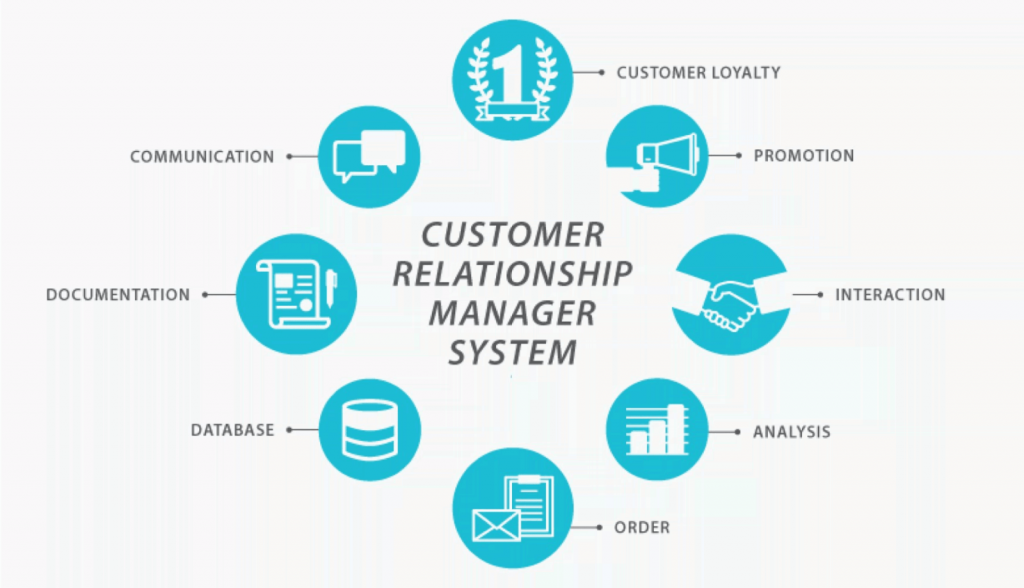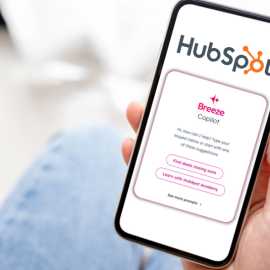You might have been using your CRM for a while, or you might not even have one relying on spreadsheets . Regardless of your situation, you may be asking yourself whether it’s time to upgrade your CRM.
In this article, we’re going to look at 5 different essential features that a best practice CRM in 2023 and beyond needs to have. For each feature, we’re going to talk about what it would look like for you if you needed to upgrade, and what it would look like for you if you did not need to upgrade. At the end of the article, if you’ve gone through these 5 features and have determined that you need to upgrade on any one of them, then it might be time for you to upgrade your CRM.
We’re going to cover:
What is a CRM?

A CRM (Customer Relationship Management) software is a technology which helps your company manage ALL of the relationships and interactions with customers and potential customers.
Generally, this involves having the following capabilities:
- Sales capabilities:
- Tracking sales performance and reporting
- Single customer view
- Visibility of warm leads
- Marketing capabilities:
- Managing internal leads
- Tracking lead sourcing
- Tracking marketing performance and reporting
- Conducting marketing activities such as social media posting, email marketing and more
- And sometimes as an additional add-on if you need it, Service and Operational capabilities:
- Managing tickets from existing customers
- Help Desk
- Customer surveys
- Knowledge base
The biggest plus side about a CRM is that it combines your company’s marketing and sales data and activities in one place or as we like to say at RedPandas: Single Customer View.
The power of Single Customer view is both sales and marketing can work together to generate revenue seamlessly. It does this by allowing you to track interactions with your customer both in the marketing lifecycle (marketing qualified leads) and in the sales lifecycle (sales qualified lead) so that all the data relating to a customer sits in one place. When all the data sits in one place like this, it becomes possible to fully utilise marketing and sales resources to guide prospects down the purchasing journey and generate revenue for the business.
CRM in Practice: Bike Retailer Example
Say you’re a business that sells bikes. You may have a top of funnel eBook Guide for newbies comparing the pros and cons of mountain bikes vs road bikes. If you have a good CRM, it should tell you that James downloaded that guide.
Now, let’s say that a couple days later James is thinking about buying a bike, but wants to know more about the pricing of different bike models, so he Google’s ‘cost of mountain bike’ and clicks on your blog article, and then reads three more blog articles on your website.
If you’ve got a good CRM, you’ll be able to see this entire online journey that James has been on with your brand, right up to the specific blog articles he’s read and the amount of time he’s spent on each page. Imagine the difference that this information makes to a sales call.
Yes, James walks in already knowing which bike model he wants, but so too does the salesperson! Additionally, the salesperson can reach out to James in advance because they know that James has recently read a “cost of mountain bike” article and is likely thinking about buying a bike. This ultimately increases close rates and shortens the sales cycle.
Unfortunately, not all CRMs have the same level of capability. For example, the amount of data you can track and capture around a prospect as well as the features available around each of the sales and marketing capabilities mentioned above differ depending on the software. As a result, depending on the size of your business, your goals, and your needs, the software you choose to use may differ.
The 5 Features to Determine If You Need to Upgrade Your CRM
To determine if you need to upgrade your CRM, you should look at the ability your company has to do the following 5 things:
- Managing internal leads
- Tracking sales performance and reporting
- Having a single customer view
- Tracking marketing performance and reporting
- Having visibility over warm leads
If you can achieve all of the above, then you probably don’t need to upgrade your CRM. However, if you’re lacking in any one of the above areas, then it may be time to upgrade your CRM.
Let’s delve into each of these 5 essential features.
Managing Internal Leads
Managing internal leads means nurturing the prospect through their buying cycle. This translates to being aware of when we’ve interacted with our customer and where they are on the buyer cycle.
At a single glance, a business should be able to tell which deals for example your trying to qualify vs which deals you’’ve sent proposals to and are awaiting sign-off for.
From a sales activity point of view, we what to know what’s happened with these deals as well. For instance, we want to know that our sales team has sent three text messages and made two calls to our prospect, we want to know what was communicated in these interactions, and we want to know exactly how far this prospect is from purchasing.
When this information is available, this gives leadership at an organisation the power to see how ANY deal is progressing by logging into the CRM system and viewing any specific prospect. This prevents unnecessary communication between the CEO and Sales Team, streamlines the process, and ensures everyone on the team is aware of the state of each prospect.
Without this system in place, you wouldn’t know what deals are falling through the cracks, and leadership would have to contact the sales rep because it’s not all centralised.
With a CRM, you should be able to manage internal leads, and if you can’t, then you might want to look at upgrading your CRM.
Tracking Sales Performance & Reporting
Tracking sales performance and reporting helps us keep sales teams accountable and increases performance over time. On top of this, it also ensures everyone in the marketing and sales department has visibility over what is happening in any one deal.

A good CRM should at a minimum record sales calls, track how many calls the sales rep makes, and track the minutes of calls. It should help us track:
- Whether or not our sales team is trying to contact any specific prospect.
- What method of communication the sales team is using, whether contact has been made, and how often.
- What our sales team did when they communicated with prospects. For example, did they call them, and if so, what did they call them about? What was said and how long did the call go?
- When a prospect moves from being a prospect to being a customer.
This is beneficial for big sales teams because it allows leadership to see from a centralised report how the sales team is performing every month. This has an enormous impact for the business, because it provides full visibility over specific sales team members without having to speak to them directly. In this way, tracking sales performance and reporting keeps sales teams accountable to performance KPIs and helps CEOs improve the performance of their sales teams.
“You need to see your data in order to improve.”
Jonico, RedPandas Sales Rep
Once you know where you’re lacking, you can then focus on improving just those metrics. For example, if you discover that the sales team is calling a large number of prospects but that the average minutes of sales calls is low, then you might want to focus on engaging prospects further prior to the initial sales call and pre-qualifying them.
Tracking sales performance and reporting is an essential feature for any CRM to include. If you aren’t currently tracking these things, then it might be time to upgrade your CRM.
Single Customer View
Having a single customer view means having full visibility over EVERYTHING related to any specific prospect, including:
- The company
- The other contacts within that company
- The actions that the prospect has taken, presented in timeline format. This could include visits to specific blog articles on your website, emails they’ve opened from your sales team, phone calls they’ve taken, events they’ve registered for, and more.
You can track EVERY SINGLE INTERACTION right from the get-go when you use a single customer view.

This has an enormous impact on the marketing and sales departments because it:
- Allows different sales team members to jump on and interact with the same prospect, resulting in no handovers and reducing bottlenecks.
- Allows marketing specialists to see which specific pieces of content led to revenue or closed deals.
- Allows sales reps to utilise the information they can see around a prospect to their advantage. For example, if a sales rep can see that the prospect has recently looked at a specific blog post on the company website around a very specific topic, the sales rep can then proactively discuss this topic with the prospect.
Do you have a single customer view for your prospects? If you don’t, then we recommend upgrading your CRM. HubSpot is one of the best software when it comes to having a single customer view.
Tracking Marketing Performance & Reporting
Tracking marketing performance means knowing where a lead came from (i.e. Google, Facebook, etc), being aware of exactly what pieces of content they have consumed, and having visibility over the level of engagement any single prospect is having with our content (measured through metrics such as bounce rate and email opens).
A powerful CRM should allow you to collect and engage leads across the top of funnel, middle of funnel, and bottom of funnel. CRMs can do this via ‘original source’ attribution. This allows us to understand exactly where a contact comes from, for example, whether a contact came from a Facebook ad or from viewing a blog article through organic SEO.

In the above example, we can see that the majority of leads generated have come from Paid Search and Paid Social. This information allows us to strategically direct our budget towards these two avenues to further drive growth.
In your CRM, you should be able to see not only where each contact came from but also how they came. For example, if you know a contact came from Facebook, you should then be able to dive deeper to see what campaign, ad set and specific ad they came from.
From there, as shown in the Single Customer View section, you should be able to track exactly what this contact is doing; what pages they visit on the company website, how long they stay on those pages for, what marketing emails they open, what ads they see and convert on, and most importantly, the amount of revenue that has been generated as a result.
Ideally, you want to know what marketing channels led to closed deals, and what specific pieces of content led to exactly how much revenue.

This gives the marketing team an enormous amount of power because it SHOWS them which SPECIFIC efforts led to revenue, so that they can rinse and repeat those same efforts and management can focus investment on areas that generate a return.
Having visibility over what content prospects are engaging with and how often they are doing this also has an enormous impact for sales teams. It allows salespeople to differentiate between prospects, allowing them to spend more of their precious time on engaging those who are more likely to buy.
For example, if the sales rep knows that a prospect has read four of their company’s blog articles about SEO in the last week, it makes sense to reach out and have a discussion with that prospect around SEO. With a system like this in place, sales reps can see when a prospect visits a specific webpage or opens a specific email, how many times the prospect has opened this email or webpage, and how long they’ve looked at a webpage for.
“We’ll have a lead, we’ll have a good conversation with them, but they’re not interested. But in six weeks or a month I randomly get a ping that this person has opened this email – why would they do that? I haven’t spoken to them in six weeks…they’re interested, or their CEO has asked about us. So I’ll call them and follow up”
Jonico, Sales Rep at RedPandas
Clearly, tracking marketing performance can make an enormous difference for marketing and sales teams. If you aren’t tracking marketing performance to this degree, then it’s probably time to upgrade your CRM.
Having Visibility Over Warm Leads
It’s important for the sales team to be able to differentiate between warm and cold leads in their lead list. By being able to differentiate between the leads who are more likely to buy and the leads who are less likely to buy, they can focus on prioritising the highest value leads, maximising their time.
On top of this, having visibility of the temperature of leads allows the sales team to try different angles on cold leads that may not be making progress.
By having visibility over warm leads, the sales team can ultimately generate revenue for the company. If your sales team doesn’t have visibility over warm leads, then it’s probably time for a CRM upgrade.
HubSpot as a CRM
HubSpot is an all-in-one Marketing, Sales and CRM powerhouse for your organisation’s activities. It allows you to:
- Bubble warmest leads to the top: this means it helps you differentiate between which leads are warm and ready to convert and which are not, allowing you to effectively utilise your time. It does this by giving you information such as the number of pages a lead has visited, when they visited these pages, and how they interacted with them.
- Automate your marketing based on user behaviour: for example, sending cleverly timed emails or SMS messages based on your contacts actions and behaviours.
- Do anything and everything sales and marketing: it gives you the ability to utilise email marketing, landing page development, social media publishing, blogging, reporting attribution, and sales tools. While you can achieve a similar result by using many different software, the versatility that HubSpot gives you is unmatched.
HubSpot is not your only marketing automation option. There are a bunch of HubSpot alternatives out there that we talk about openly at RedPandas. Over the past 10 years we’ve worked with and on every major marketing automation tool out there and although there are alternatives that quite frankly, almost do exactly what HubSpot does, they are incredibly difficult to use and technical.
What HubSpot has been able to do better than anyone else, is wrap together all the tools both marketers and salespeople could want in a single suite — in an incredibly easy to use way.
You can achieve maximum results by utilising HubSpot’s entire technology stack, or in other words, the combination of it’s Marketing, Sales and CRM software. As a CRM, HubSpot is an extremely powerful software, however, what makes it truly valuable is that it combines marketing, sales and the CRM for an all-in-one powerhouse technology stack.
If you want to find out more about what HubSpot can do, check out this article.
So, should I upgrade?
Ultimately, the decision on whether to upgrade your CRM is dependant on your objective and whether or not you can achieve the aforementioned 5 core features with your current CRM.
Firstly, ask yourself, do you have the capability to achieve ALL of these 5 features with your current CRM? If the answer is yes, then you likely don’t need to upgrade your CRM. However, if the answer is no, then the chances are that it is probably time to upgrade your CRM.
Second, figure out what your objective is. Does your objective require you to have all of these 5 features? If it doesn’t and you can get away with just a few of them, then does your current CRM support your needs?
Asking these questions will help you figure out if it’s time to upgrade your CRM. If you’re confused or not completely sure, use the 5 features as a guide, and if you’re lacking heavily in even one of them, then you might want to think about upgrading your CRM.












